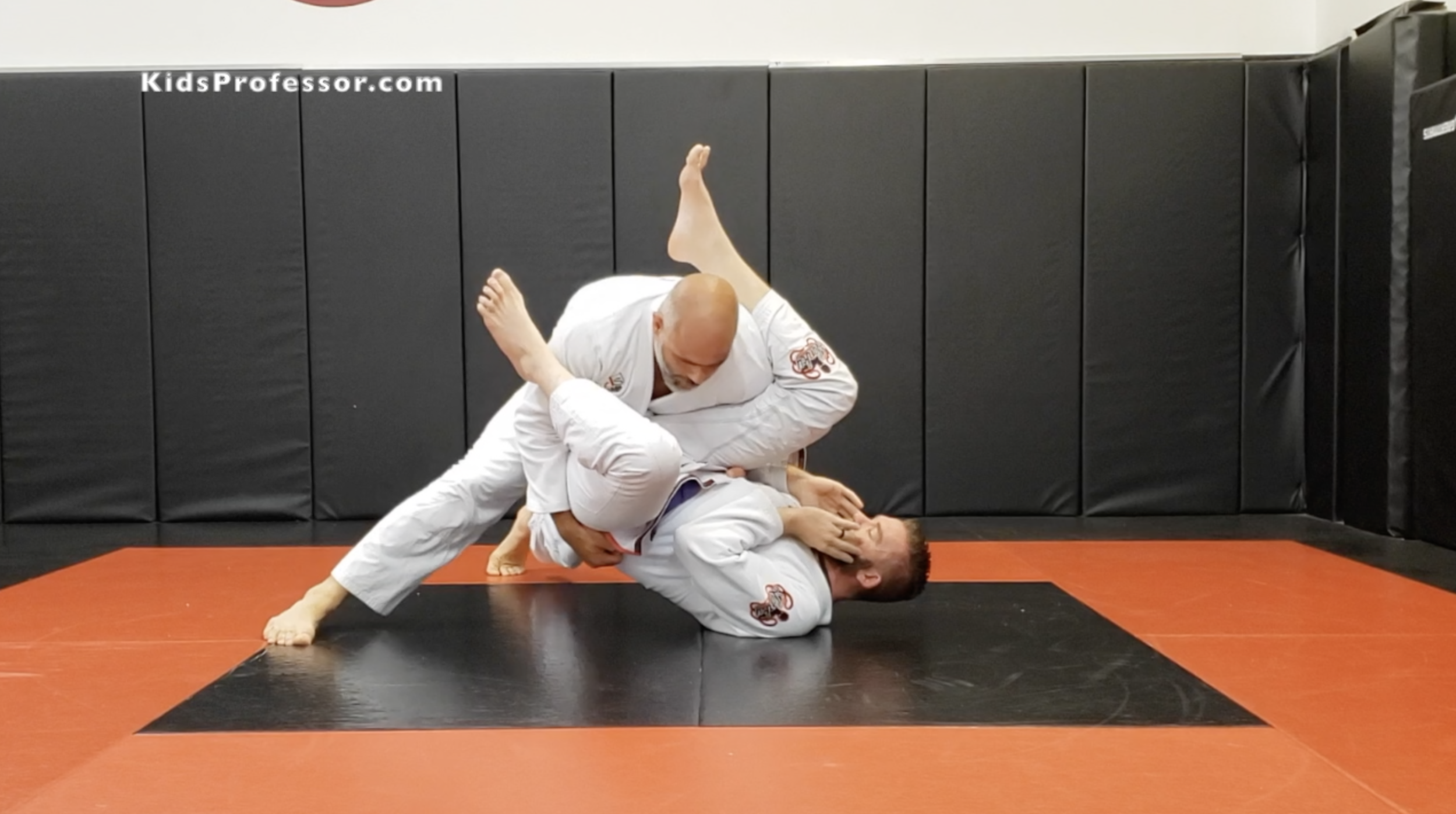Student Objectives:
The student will apply a guard passing technique with both hands under the legs.
The student will explore technical grips to control the hips before and after passing the legs.
Teaching Cues:
Hands to belt
Chop
Shelf
Palm Up
Elbow to Belly Button
Rotate
Lesson: Double Under Pass
The assisting student will start flat on their back with their legs bent and feet flat on the floor. Their knees and feet should be spread slightly more than the width of their hips. The practicing student will start on their knees with between the legs of the assisting student. Allow the practicing student to explore the distance and space for their starting position. The practicing student will place their hands flat on the floor and progress their grip under the legs and around to the hips. A strong grip should be taken on both sides of the hips with the hands grasping the belt but with their forearms still touching the floor. This will allow the student to tuck their elbows and prevent a Leg Pummel or Elbow Push.
When the practicing student has strong belt grips they will tuck their elbows and drive forward until they have eliminated all of the space between their shoulders and the back of the assisting student’s thighs. It is ok if the shoulders fit in behind the knee pit, however the goal is to eliminate the space, not to stack the assisting student.
The elimination of the space should either lift the hips of the assisting student off the floor or make them light enough that a slight pull with the hands will lift the hips. Once the hips have come off of the floor the practicing student should slide their knees under the lower back and place the hips on top of their thighs. This position is a crossroads of the Double Under Pass and prevents the assisting student from bridging and/or shrimping. It also affords the practicing student the chance to choose a good finish.The practicing student will then then take their left hand and take a palm up grip inside the lapel just above the belt. Emphasize that this grip should be low and close to the hips, but above the belt. If the student is not wearing a belt, because it came off during rolling, then the grip should be below the belly button. I specify the left hand only because most students will naturally close their kimono left over right, and against the mirror grip, the left hand will make an easy grip on the top lapel. Now that the grip is obtained on the lapel there should be a strong tucking of the elbow on the left arm with the student trying to touch their elbow to their belly button. Once this has been tucked the practicing student should pull with the grip on the belt and enter into a plank. Slowly and tightly the practicing student should rotate around the elbow of their hand that is in the lapel. This hides the elbow from the Elbow Push while also creating a strong pressure across the whole of the far side.
If done correctly this will create a very strong pass that totally eliminates the possibility of the bridge out. Encourage the practicing student to end near the leg drag position after completing the pass while maintaining both the grip on the belt and the grip on the lapel.
Possible Extensions:
Once the practicing student understands the pathways they should start standing with Joystick Grips and enter dynamically. Learning to make the transition from standing to the grips on the belt will take some practice.
Once entering the shelf moving into the Hang Clean Pass has a lot of value. When initially teaching this movement make sure you emphasize the back roll for the assisting student. Make this portion of the movement a group effort to obtain the backroll without going over the neck. This means that both students should be working together to successfully, and safely roll to the turtle position.
The Body Shuck becomes a really easy option once the student has successfully gripped the belt and takes very little instruction. It is a combination of the Hang Clean Pass and the standard Double Under Pass.
Develop the transition from the Double Under to the Over Under. While these passes are significantly different their initial grips are similar. It is also important to understand that defending against the Double Under often gives the Over Under.
Possible Refinements:
The grips on the belt are often angled incorrectly. Make sure the hands slide along the floor with a palm up orientation and then the grip is made when the hands contact the belt/hip. This insures that the elbows can stay tucked while also offering more control over the hips.
Very commonly intermediate students will attempt to skip the “shelving” option. This happens because the move can work without shelving, however the student will be limited in their options and/or it opens them to the leg pummel.
Reference materials:
Teaching Reflections:
How did I do teaching?
What could I do better next time?
Did the student gain proficiency in lesson material?
